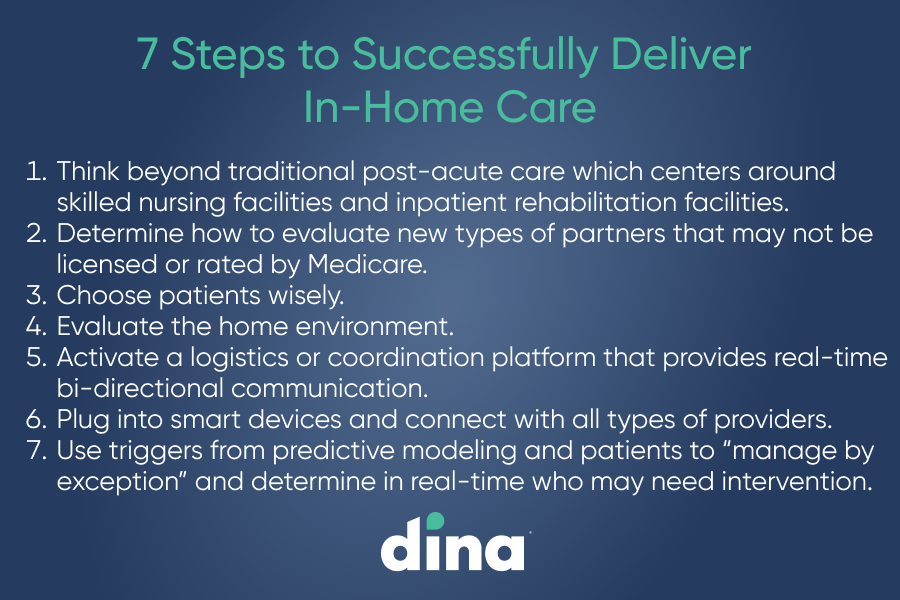
 The time for health systems and managed care organizations to transition more care to the home has arrived. But delivering in-home care is complex and there is no one-size-fits-all solution. Dina Chief Medical Officer Dr. Maryann Lauletta (below) shares seven steps to help you prepare for the transition.
The time for health systems and managed care organizations to transition more care to the home has arrived. But delivering in-home care is complex and there is no one-size-fits-all solution. Dina Chief Medical Officer Dr. Maryann Lauletta (below) shares seven steps to help you prepare for the transition.
Step 1. Think beyond traditional post-acute care which centers around skilled nursing facilities and inpatient rehabilitation facilities. Instead, build an organization of community and home-based partners that can support at-home care. This includes non-medical resources that are outside of the conventional referral sources, such as meal delivery and pest control.
Step 2. Determine how to evaluate new types of partners that may not be licensed or rated by Medicare. Working with a technology organization that can digitally engage you and your partners is critical.
Step 3. Choose patients wisely. Identify which patient populations will be managed at home and who is responsible for monitoring them. Consider whether or not the patient’s disease state is appropriate to receive care at home.

Step 5. Activate a logistics or coordination platform that provides real-time bi-directional communication. This allows the treating team to connect with patients and caregivers in a more intimate way than a traditional healthcare portal.
Step 6. Plug into smart devices and connect with all types of providers, not just doctors, who can electronically engage patients for monitoring, evaluation, telehealth services, or to answer questions.
Step 7. Use triggers from predictive modeling and patients to “manage by exception” and determine in real-time who may need intervention. We have a nursing shortage and a healthcare provider shortage, and no one has the workforce to adequately manage a remote patient population. Managing by exception ensures no one falls through the cracks.
We believe technology is the key to extend your reach into the home and remain connected to your home-based partners in a care setting that you no longer control, but must have a presence around the clock. We connect different points of care and different providers of care and align them with the same goals, all while keeping the patient at the center. And this can positively influence outcomes and keep more patients safe and well cared for in their homes.
Interested in learning more? Watch our webinar “The Shift to Hospital-at-Home,” where we talk about transitioning to this new model of care and determining care-at-home readiness.




